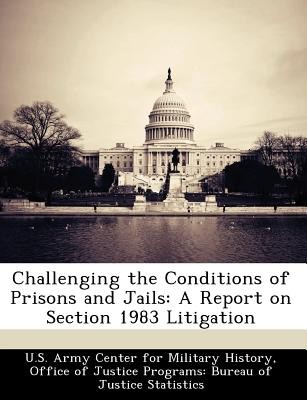
- We will send in 10–14 business days.
- Author: Martin Blumenson
- Publisher: Bibliogov
- ISBN-10: 1249453321
- ISBN-13: 9781249453321
- Format: 18.9 x 24.6 x 0.3 cm, softcover
- Language: English
- SAVE -10% with code: EXTRA
Reviews
Description
This Discussion Paper seeks to furnish systematic data on litigation under Section 1983 of the U.S. Code, which the U.S. Supreme Court has interpreted to permit prisoners to sue correctional officials in Federal court when the conditions of confinement fail to meet constitutional standards. Section 1983 litigation represents 1 in 10 of the civil cases filed in U.S. district courts. This profile of such lawsuits examining more than 2,700 cases disposed of in 1992 in 9 States (Alabama, California, Florida, Indiana, Louisiana, Missouri, New York, Pennsylvania, and Texas) shows that 95% of cases result in dismissals, 4% result in stipulated dismissals or settlements, and 2% result in trial verdicts (of these, less than 1/2 of 1% result in a favorable verdict for the prisoner). Half the cases last 6 months or less because they fail to meet Section 1983 requirements. In cases lasting 6 to 12 months, the percent of issues the court dismissed decreases, with a corresponding increase in stipulated dismissals and successful defendants' motions to dismiss, a relative decrease in cases challenging convictions and sentences, and an increase in the relative number of cases concerning inadequate medical treatment, lack of due process, and denial of access to the courts. In cases surviving up to 2 years, issues of physical security become more frequent; the cases are more likely to have appointed counsel and evidentiary hearings; and successful prisoner litigation becomes more likely, with both settlements and verdicts resulting in financial awards to prisoners. The authors, Hanson and Daley of the National Center for State Courts, state that (1) cases that lack an adequate basis in law or fact should be resolved through State administrative grievance procedures instead of through litigation in the U.S. courts, and (2) under the Civil Rights of Institutionalized Persons Act of 1980, intended to resolve prisoners' grievances through State administrative procedures, the U.S. Attor
EXTRA 10 % discount with code: EXTRA
The promotion ends in 19d.16:05:30
The discount code is valid when purchasing from 10 €. Discounts do not stack.
- Author: Martin Blumenson
- Publisher: Bibliogov
- ISBN-10: 1249453321
- ISBN-13: 9781249453321
- Format: 18.9 x 24.6 x 0.3 cm, softcover
- Language: English English
This Discussion Paper seeks to furnish systematic data on litigation under Section 1983 of the U.S. Code, which the U.S. Supreme Court has interpreted to permit prisoners to sue correctional officials in Federal court when the conditions of confinement fail to meet constitutional standards. Section 1983 litigation represents 1 in 10 of the civil cases filed in U.S. district courts. This profile of such lawsuits examining more than 2,700 cases disposed of in 1992 in 9 States (Alabama, California, Florida, Indiana, Louisiana, Missouri, New York, Pennsylvania, and Texas) shows that 95% of cases result in dismissals, 4% result in stipulated dismissals or settlements, and 2% result in trial verdicts (of these, less than 1/2 of 1% result in a favorable verdict for the prisoner). Half the cases last 6 months or less because they fail to meet Section 1983 requirements. In cases lasting 6 to 12 months, the percent of issues the court dismissed decreases, with a corresponding increase in stipulated dismissals and successful defendants' motions to dismiss, a relative decrease in cases challenging convictions and sentences, and an increase in the relative number of cases concerning inadequate medical treatment, lack of due process, and denial of access to the courts. In cases surviving up to 2 years, issues of physical security become more frequent; the cases are more likely to have appointed counsel and evidentiary hearings; and successful prisoner litigation becomes more likely, with both settlements and verdicts resulting in financial awards to prisoners. The authors, Hanson and Daley of the National Center for State Courts, state that (1) cases that lack an adequate basis in law or fact should be resolved through State administrative grievance procedures instead of through litigation in the U.S. courts, and (2) under the Civil Rights of Institutionalized Persons Act of 1980, intended to resolve prisoners' grievances through State administrative procedures, the U.S. Attor


Reviews